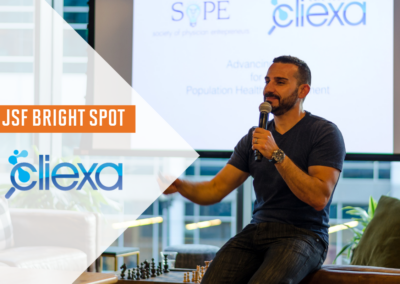Over the past 100 years, disease has progressed from infectious to chronic. Chronic diseases e.g. heart disease, diabetes, obesity, are often preventable, and frequently manageable with lifestyle adjustments. With chronic diseases, the need to monitor the condition is long-term, thus making remote patient monitoring a key aspect to health management.
Remote Patient Monitoring technology allows patients and doctors to monitor chronic conditions and communicate which improves quality of life and clinical efficiency.
RPM includes monitoring devices such as glucose meters for patients with diabetes and wearables for heart rate. Data is sent to the patient’s doctor or caregiver to be analyzed for trends and underlying conditions.
RPM can shift the focus from intervention, i.e heart attack emergency, to prevention, i.e heart rate monitor that alerts PCP when irregular.
Preventing readmissions is a priority for hospitals, especially those under the Hospital Readmission Reduction Program, a provision in the Affordable Care Act (ACA). Recent nationwide data suggests that remote monitoring may reduce hospitalization costs by 30%.
Four of our portfolio companies are operating within the remote patient monitoring space: Reemo, Luna Lights, cliexa, and Life Detection Technologies.
Luna Lights (JSF ’17) inhabits the senior citizen space for fall prevention. Luna Lights uses data it gathers from a bed pad to track nighttime behavior. The bed pad triggers a set of lights to illuminate the path to the bathroom to prevent falls. Caregivers can use this data to assess how residents are sleeping during the night to make insights on resident health.
Reemo (JSF ’15) empowers stroke-victims, wheelchair-bound, and the elderly to live in their homes independently through a smart watch which offers caregivers valuable insights on daily activities of their residents.
cliexa (JSF’ 18) provides chronic care management and RPM for multiple conditions that enable patients to track their chronic disease activity with clinically-proven and scientifically-tested scoring models. Its cardiovascular platform will be in pilot at American College of Cardiology in March.
Life Detection Technologies (JSF ’15) has developed a way to acquire heart rate and respiration rate of a user with absolutely no user contact. LDT detects changes that are happening within the user’s body and translate those changes into accurate heart rate and respiration rate data. Initial markets that they are targeting include the baby monitor market for in-home SIDS detection, in-home cardiovascular disease and sleep apnea monitoring, PERS markets, long term care facilities and the automotive markets.
To build the healthcare system of the future, we need to build it for the future.
““Better health through innovation is the opportunity of our times. Let Jumpstart give your start-up an unfair advantage to win.” – Vic Gatto”
Sources:
https://mhealthintelligence.com/news/hospitals-are-finding-roi-in-remote-patient-monitoring-programs
https://searchhealthit.techtarget.com/definition/remote-patient-monitoring-RPM





